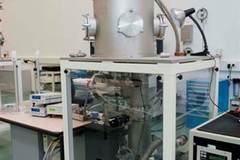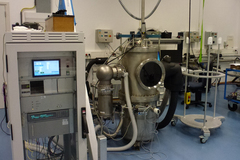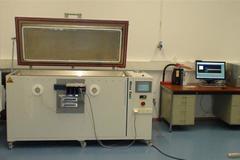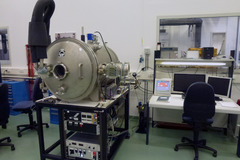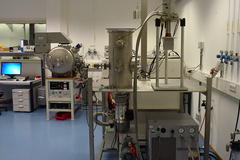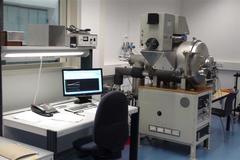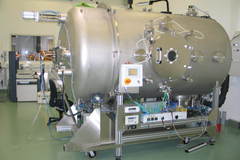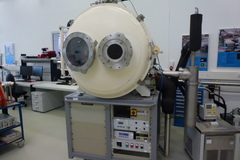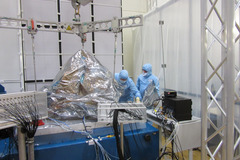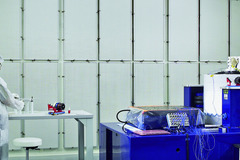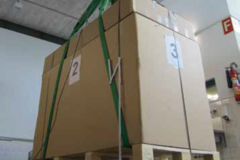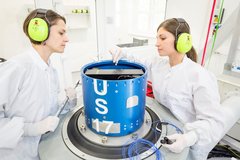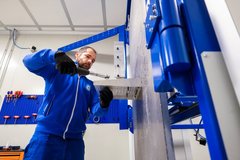The "Pyroshock" testing machine simulates vibrations that occur during the orbital operations of the satellite. During this phase, series of microexplosive charges are detonated in order to free systems safety retentions (of antennas, solar panels, etc..). Detonations generate mechanical stress on the installed equipments reaching 10.000 g of peak acceleration.
The “Pyroshock” equipment is capable of generating mechanical shocks with same dynamic behavior of those recorded in-field trough shocks are produced by mechanical impact on a resonant plate. The system is equipped with accelerometers and multichannel acquisition panel capable to record and process the detected signals.
Test method
The sample is installed on a plate vertically hanged. The plate is subjected to an impact via a specific hammer. During the impact the plate vibrate and transmit the shock to the sample.

